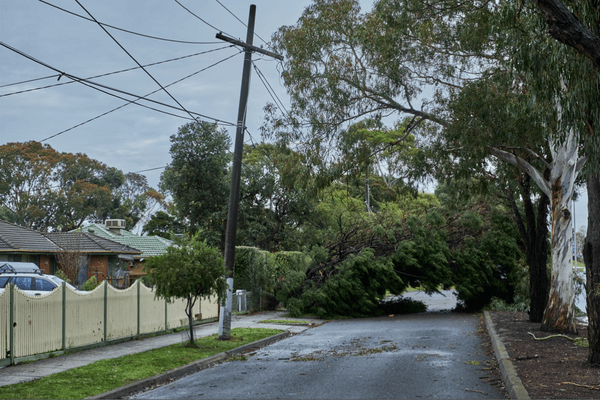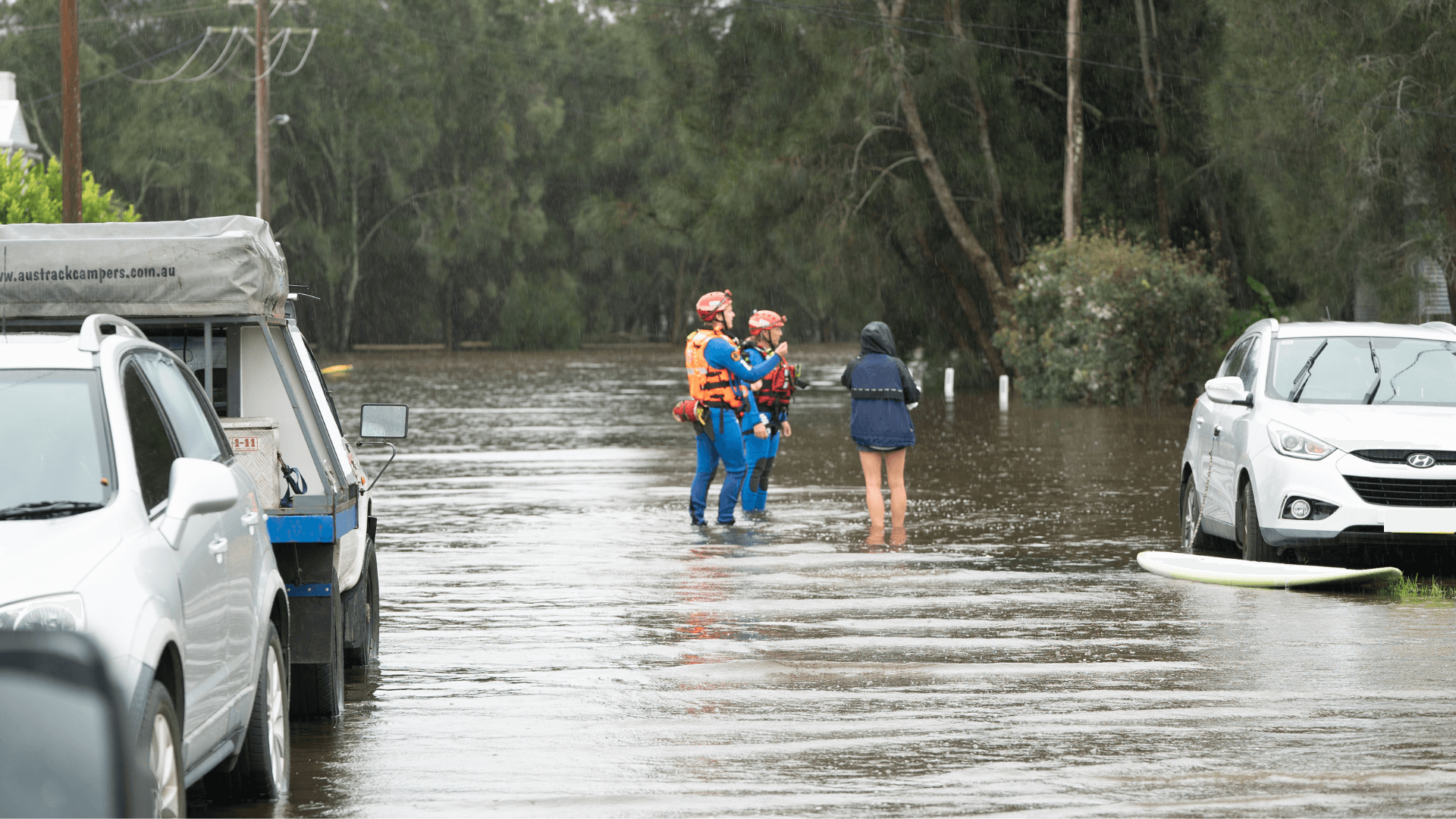The rise of flood waters
Despite being the 'sunburnt' country, there's no denying our susceptibility to floods and the impact they have on homes and communities. In 2022, many Australian homes and businesses were left underwater after torrential rain brought upon the most severe flooding in over a decade. With thousands of emergency responders deployed to help with flood related emergencies, it’s important to know the risks, and how you can stay safe.
Watch out when responding
If you are an emergency responder, your first instinct may be to rush in to help, but if you’re not careful, you could be putting yourself, your crew, or the public at risk of electrical hazards.
- Always assume the electricity is ON, even if flood waters are highElectricity network operators may not isolate the power until floods reach 1 metre from the overhead wiring.
- Watch out for electrical hazardsKeep an eye out for fallen powerlines and remain at least 8 metres away.
- Steer clear of signs, streetlights, metal fences and other conductive materialSignage and structures made of metal are conductors of electricity. Ensure you steer clear to stay safe.
- Solar panels will continue to produce electricity if exposed to lightEven if the electricity supply has been switched off, the wiring and output on solar panels may be live and dangerous.
- Never pull trees or branches clear of powerlinesTrees and branches may be conducting electricity which could easily pass to you.
- High voltage powerlines also run undergroundExposed or dislodged underground cables could be live. Remain at least 8 metres away.
Boats and floodwater
The use of rescue boats is becoming more common. Knowing what to look out for when performing rescues in flood situations is more important than ever. Don’t forget that because metal is a conductor of electricity, caution must be used when using aluminium rescue boats as they present a potential risk of electric shock.
Whenever there’s flooding, the clearance between power lines is reduced, as water levels rise. Always proceed with caution and maintain the required, safe distance from the powerlines.
Guidance on distances
- If you're operating upstream, maintain at least 250 metres from powerlines in case of a motor failure.
- If you’re operating downstream, maintain at least 8 metres distance.
So when does the power get cut?
Never assume at any stage that the power has been switched off. Electricity network operators may not isolate the power until floods reach 1 metre from the overhead wiring. This is to ensure that the electrical supply is maintained to communities in times of disaster.
Be aware of low hanging powerlines, submerged poles, streetlights, and wires that could be live. Even coming close to electric wires could cause the electricity to arc and jump.
Always assume powerlines are live, even if they are under water.
Solar panels
Flooding can force homeowners onto their roofs. If you’re responding, it’s critical that you’re on the lookout and are extremely careful around solar panels. Solar panels can pose substantial electrical risk and have the potential to cause death or severe injury if a person comes into contact with the wiring or the terminal output.
Solar panels will continue to produce electricity if they are exposed to light, even if the electricity supply has been switched off. Artificial light, from boats for example, can also generate small amounts of electricity.
Equally, if the waterline rises to be higher than properties on the streets, responders in boats or other vessels need to be extra vigilant of submerged homes.
Cleaning up after floods
When the water recedes, the damage left behind is revealed. Flood waters can hide electrical hazards like fallen powerlines. Hence, electrical hazards will still be present and it’s important you stay switched on as you move into the clean-up phase.
- Be careful around fallen or damaged trees and other debris. They can hide fallen powerlines and other electrical hazards.
- Never approach fallen powerlines. Stay at least 8 metres back and report them to your local electricity distributor.
- Flood damaged properties must be checked by a qualified electrician before the power is switched back on. Outdoor equipment like air conditioning units and pool pumps must be inspected before usage.
- Listen out for generators and be cautious around homes that may be running their own energy storage systems, including solar or batteries.
- Only licenced electricians are qualified to conduct electrical work after flooding – it is illegal and dangerous if homeowners do it themselves.
- The Clean Energy Council Australia stresses that following a storm or flood, solar PV systems should not be turned on until they are professionally assessed.

Helping residents with electrical assistance
Remember, flood damaged properties must be checked by a qualified electrician before the power can be switched back on.

